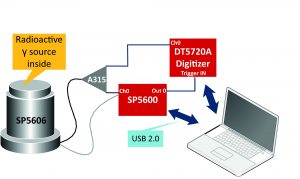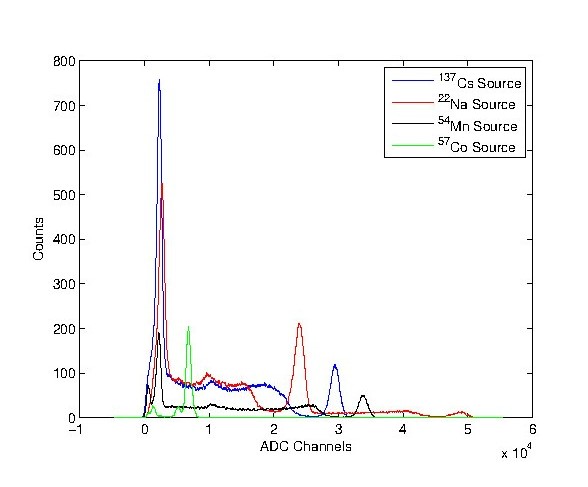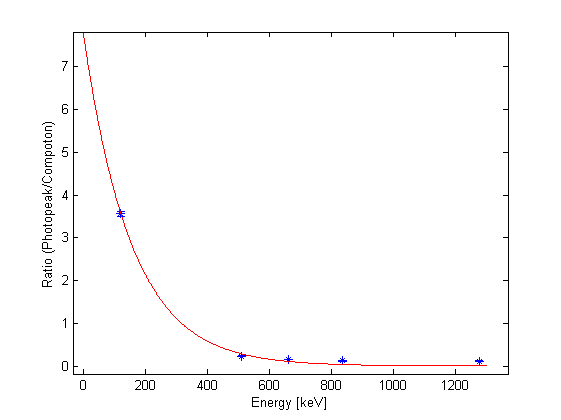| Difficult | Execution Time | Data Analysis | Radioactive Sources |
|---|---|---|---|
| Yes | Yes |
Hardware setup
This experiment guide is referred to the SP5600C educational kit. If you don’t have this kit, choose your own from the following list to visualize the related experiment guides: SG6117B, SG6117C, SG6117E – Educational Kit.
Equipment: SP5600C – Educational Gamma Kit
| Model | SP5600 | DT5720A | A315 | SP5606 | SP5607 | Additional Tool |
|---|---|---|---|---|---|---|
| Description | Power Supply and Amplification Unit | Desktop Digitizer 250 MS/s | Splitter | Mini Spectrometer | Absorption Tool | Gamma Radioactive Source |
Purpose of the experiment
Determination of the ratio of the effective cross-sections due to Compton and Photoelectric effects as a function of photons energy.
Fundamentals
In the energy range up to 2MeV, gamma rays interact with matter by two processes:
- Photoelectric Effect, dominant at energy less than 100 KeV. In this process the photon energy is completely transferred to atomic electron bounded:
γ + atom -> ion + e–
- Compton Scattering, linked to the elastic collision between electrons and photons and relevant at 1MeV energy level:
γ + e – –> γ’ + e-’
The predominant mode of interaction depends on the energy of the incident photons and the atomic number of the material with which they are interacting. From the acquired γ-spectrum, it is possible to estimate the fraction of events due to Compton scattering and those caused by the photoelectric. The ratio of the event fractions is used to determine the ratio of the two effective cross-sections that depends on the detector size.
Carrying out the experiment

Spread the optical grease on the open face of the scintillating crystal, insert this crystal side in the SP5607 spectrometer. Connect the power cable to the SP5600 module and connect the other cable of the spectrometer to the splitter A315. Connect the two split outputs to SP5600 channel 0 and DT5720A channel 0. Use the SP5600 digital output as DT5720A “trigger IN“. Use the default software values or optimize the parameters to choose the discriminator cut-off threshold in mV. Switch off the power supply, open the spectrometer and insert the radioactive gamma source to acquire the first spectrum. After that, switch off the power supply, open the spectrometer, change the radioactive gamma source and repeat the measurement.
Results
By using several radioactive sources or spectra simulated by DT4800, the energy dependence of the ratio between the cross-sections of two phenomena can be examined, by verifying that the Photoelectric Effect cross section decreases with increasing energy compared to the Compton Scattering cross section for the used detector size.




